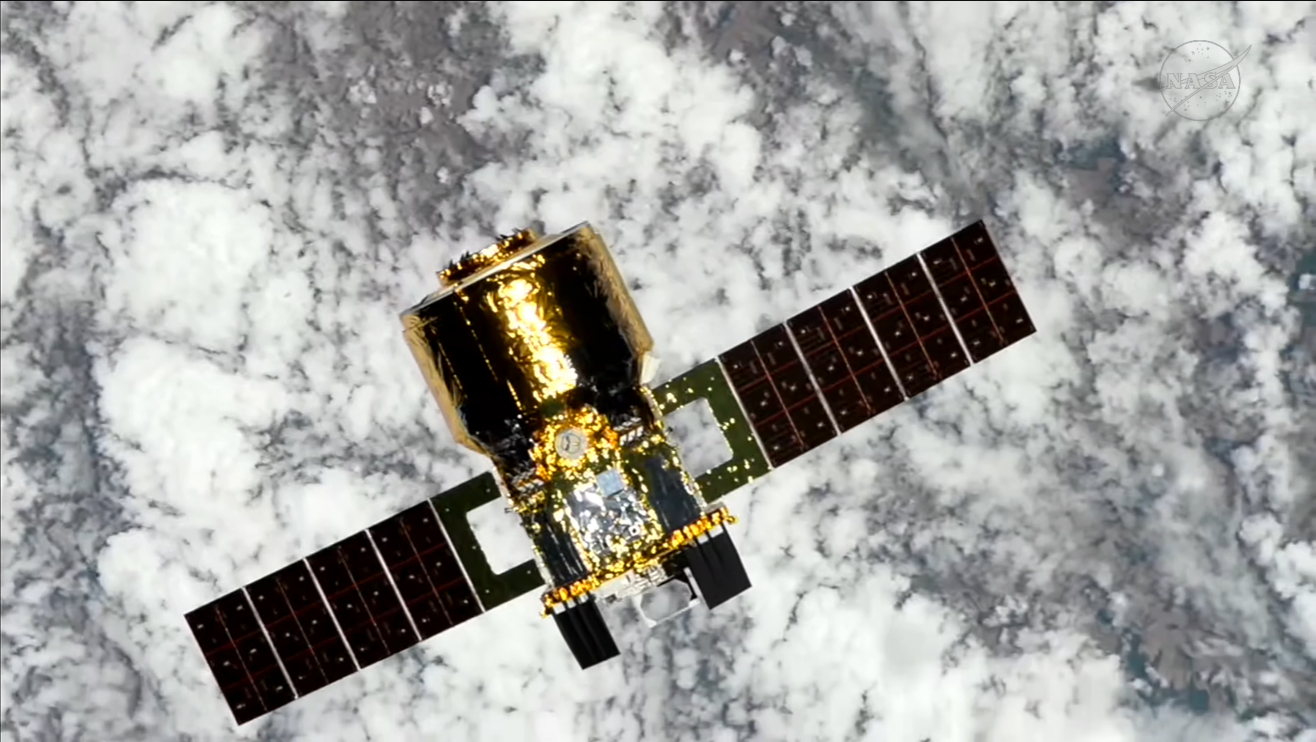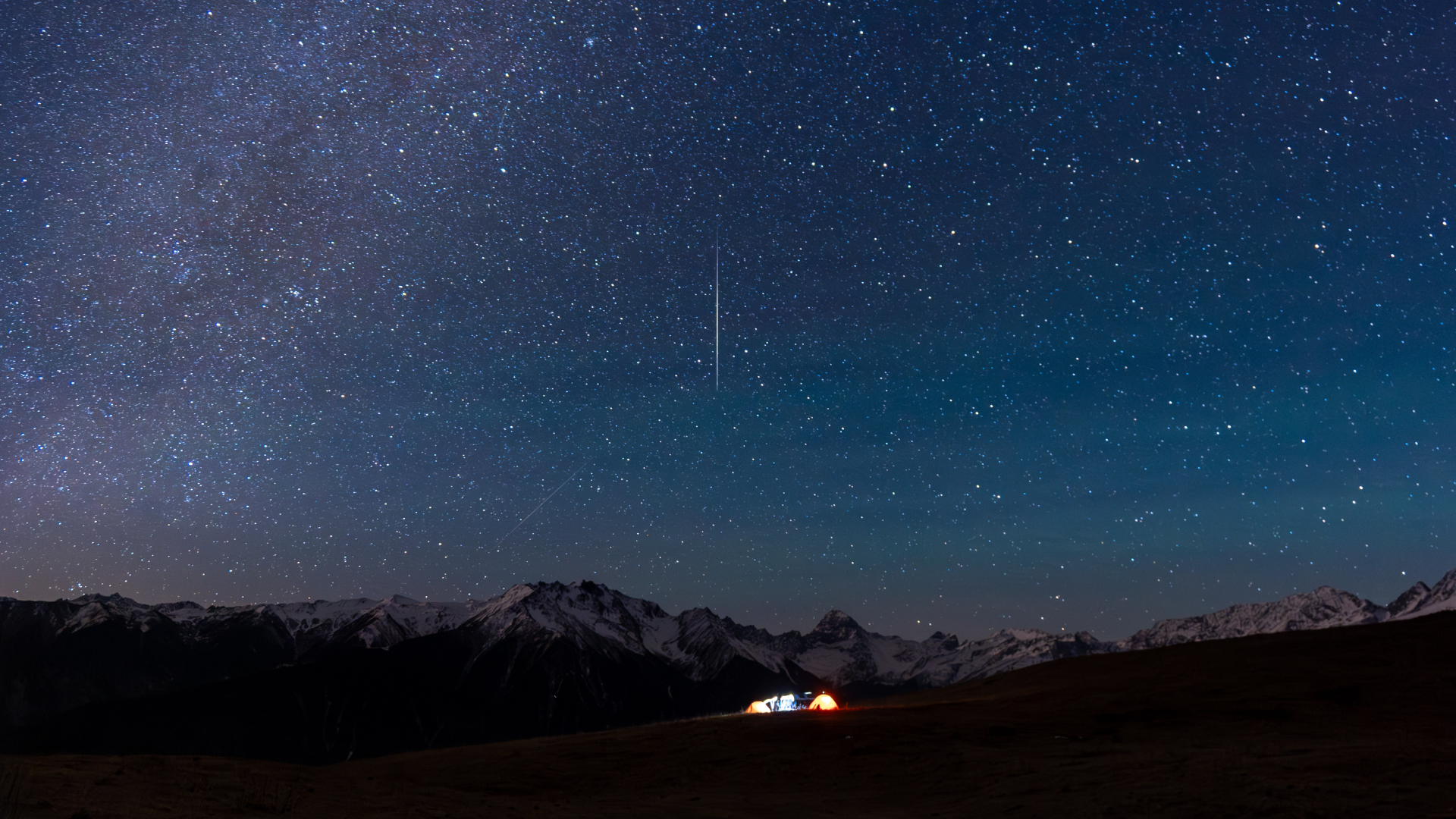Japan's 1st HTV-X cargo craft arrives at the International Space Station
HTV-X was berthed to the station at 11:58 p.m. EDT today (Oct. 29).
Japan's new HTV-X cargo spacecraft arrived at the International Space Station for the first time ever today (Oct. 28), delivering thousands of pounds of payloads and supplies to astronauts aboard.
The robotic HTV-X was captured by the station's Canadarm2 robotic arm — operated by NASA astronaut Zena Cardman and Kimiya Yui of the Japan Aerospace Exploration Agency (JAXA) — today at 11:58 p.m. EDT (1558 GMT), as the station flew 260 miles ( kilometers) over the south Atlantic Ocean.
The HTV-X is the successor to Japan's H-II Transfer Vehicle (HTV), which flew nine missions — all of them successful — to the International Space Station (ISS) between September 2009 and May 2020.

Like its predecessor, the HTV-X can carry about 13,200 pounds (6,000 kilograms) of payload to low Earth orbit. It's hauling about 9,000 pounds (4,080 kg) of food and supplies on this mission, which began with a launch atop an H3 rocket on Saturday (Oct. 25).
Upon its rendezvous with the ISS, HTV-X carried out a series of test maneuvers, including a retreat-from-station procedure and systems checks ahead of spacecraft capture.
The new freighter is expendable, just like the HTV (which was also known as Kounotori, Japanese for "White Stork"). But the HTV-X can stay up for considerably longer stretches.
"HTV-X enhances transportation capabilities and adds the capability to provide various users with on-orbit demonstration opportunities for up to 1.5 years after leaving ISS until reentry," Mitsubishi Heavy Industries, which builds the HTV-X for JAXA, wrote in a description of the vehicle.
Breaking space news, the latest updates on rocket launches, skywatching events and more!
HTV-X joins three other vehicles in the stable of robotic ISS cargo craft. The other freighters that currently service the station are Russia's Progress vehicle as well as Cygnus and Dragon, which are built by the American companies Northrop Grumman and SpaceX, respectively.
All are expendable except Dragon, which splashes down in the ocean for recovery and reuse. Dragon can therefore also haul scientific experiments and other materials down to Earth from the station.

Michael Wall is a Senior Space Writer with Space.com and joined the team in 2010. He primarily covers exoplanets, spaceflight and military space, but has been known to dabble in the space art beat. His book about the search for alien life, "Out There," was published on Nov. 13, 2018. Before becoming a science writer, Michael worked as a herpetologist and wildlife biologist. He has a Ph.D. in evolutionary biology from the University of Sydney, Australia, a bachelor's degree from the University of Arizona, and a graduate certificate in science writing from the University of California, Santa Cruz. To find out what his latest project is, you can follow Michael on Twitter.
You must confirm your public display name before commenting
Please logout and then login again, you will then be prompted to enter your display name.

